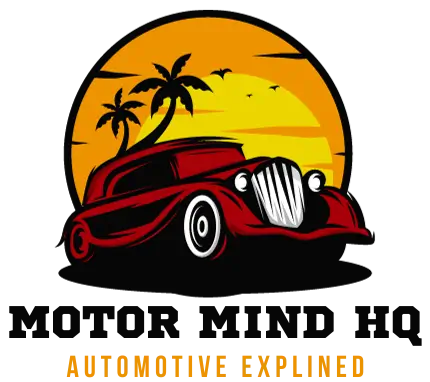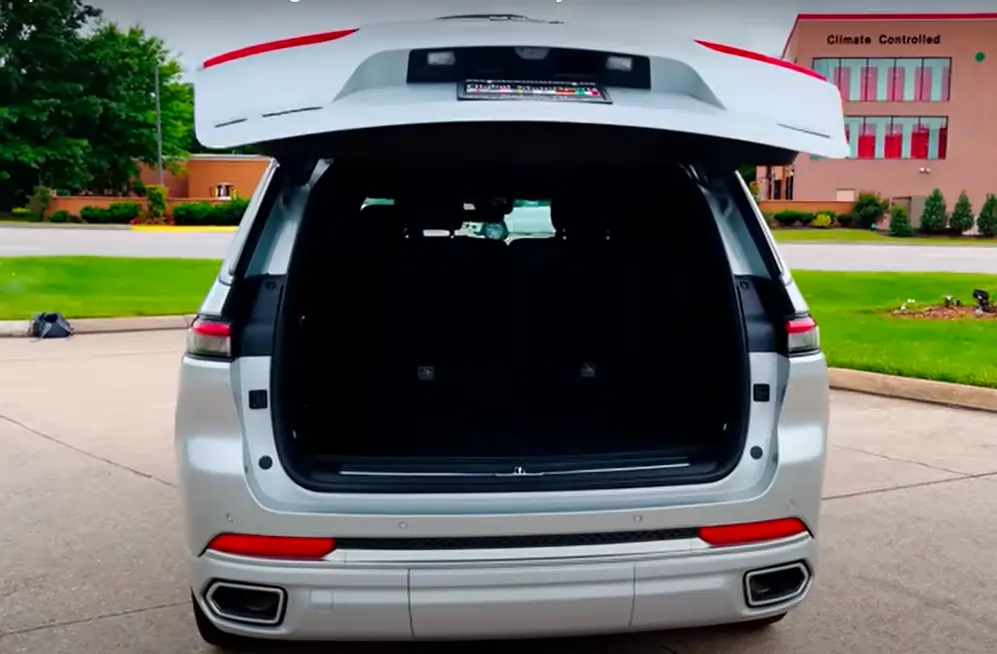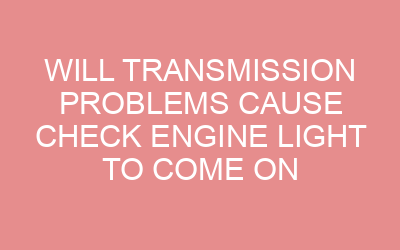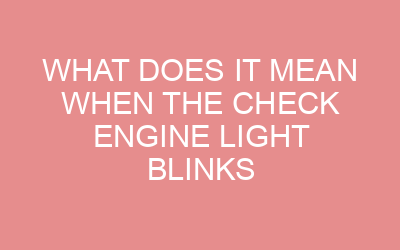The dreaded “service 4WD” warning light on your dashboard can be confusing and concerning. This light typically indicates an issue within your four-wheel drive system that requires attention.
In this blog post , we’ll cover common causes such as how to clear service 4WD light, what service may be needed, how to temporarily or permanently reset the light yourself, when to take it to a mechanic, and how to avoid 4WD problems in the first place through proper maintenance.
With a detailed look at this diagnostic trouble indicator, you’ll know how to interpret the service 4WD light and what to do when it turns on.
What are the common causes of the service 4WD light?
There are a few typical issues that can trigger the service 4WD warning light in your vehicle:
Sensor failure – Sensors that monitor components like wheel speed, transfer case position, and differential gear engagement can fail and cause a 4WD error. Encoder motor – The encoder motor synchronizes the front and rear driveshafts.
If it malfunctions, the 4WD system control module sets a code. Transfer case motor – Electric motor failure inside the transfer case prevents proper shifting into 4WD high or low range.
This activates the light. Fluid level – Low transfer case oil, front differential oil, or low transmission fluid can all cause 4WD failure and turn on the warning light.
Transfer case linkage – Linkage wear or disconnection means the transfer case can’t properly switch between 2WD and 4WD as commanded, triggering an error.
Wiring harness – Damaged or corroded wiring that connects 4WD system sensors and motors will cause a signal loss, turning on the 4WD warning. Control module – An internal fault in the 4WD controller will disable functioning and default to 2WD while showing the 4WD diagnostic light.
Locking hubs – Mechanical or vacuum operated hub locks that engage the front driveline can become stuck or damaged, causing a 4WD fault. Heading 2 (350 words):
How do I reset the service 4WD light temporarily?
There are a couple methods to temporarily reset the service 4WD warning light to clear the error codes and turn off the light:
Disconnect battery – Unhooking the battery cables for 30+ seconds will clear stored codes and reset the ECU. This turns off the 4WD light until failure reoccurs. OBD scanner reset – Using a scan tool to access the 4WD control module can erase DTCs and disable the light. Will return once the module detects the issue again.
Ignition cycles – Turning the ignition fully on-and-off three times can sometimes clear the light for short periods, until codes reset.
Fuse removal – Pulling the fuse for the 4WD control module for 30+ seconds before reinserting may temporarily deactivate the light by resetting the module.
Tire size – Altering tire size slightly resets sensors tracking wheel speed. Light will stay off until the system recalibrates to size change and detects fault.
Button reset – Some models have a button or sequence using 4WD and traction control switches to reset the light. Check the owner’s manual.
These DIY resets save a trip to the mechanic by erasing the symptom of the warning light. But they won’t fix the underlying problem, which will require proper diagnosis and repair for a permanent solution. The light eventually comes back on in days or weeks.
How can I permanently fix the service 4WD light issue?
To fully resolve and turn off the service 4WD light for good, the underlying failure needs to be properly diagnosed and repaired:
Sensor replacement – Faulty wheel speed sensors, transfer case position sensors, or differential sensors need to be replaced and properly calibrated.
Fluid top off – Low fluid levels caused by leaks must be addressed. Top up transfer case oil, transmission fluid or differential oil.
Drain/fill fluid – Contaminated or older 4WD fluids should be drained and refilled per factory service schedule.
Motor/actuator repair – Malfunctioning encoder motor, transfer case motor or locking hub actuators need rebuilding or replacing.
Control module – If the 4WD controller itself has an internal electronic failure it must be sent for rebuild or replacement.
Wiring repair – Check for corroded or severed wiring causing connectivity issues and repair as needed. Transfer case linkage fix – Adjust, realign, or replace worn shift linkages connecting knob to transfer case.
Locking hub service – Disassemble, clean and lubricate manual locking hubs to fix sticking or seized engagement.
The exact cause of the 4WD trouble must be pinpointed through methodical diagnostic testing to reveal the failed component. Proper repair or replacement of damaged parts permanently solves the root problem so the light stays off.
Should I drive with the service 4WD light on?
It’s not recommended to continue driving with the service 4WD warning illuminated. Here are the risks:
Accelerated failure – Ignoring the light allows damage from the underlying issue to compound. Driving in 2WD with a 4WD system problem accelerates wear and further degradation.
Safety hazard – Loss of traction or unpredictability from intermittent 4WD function during inclement weather creates an unsafe driving situation.
AWD disabled – If the AWD or 4WD system is totally disabled, this alters vehicle handling characteristics and increases chances of loss of control.
Mechanical damage – Forced engagement of damaged components by using 4WD mode can lead to internal failure of motors, actuators, sensors or gears.
Voided warranty – The vehicle warranty likely does not cover damage to the drivetrain or other components due to continued operation with the 4WD service light illuminated.
Off-road risks – Venturing off-road without properly functioning 4WD vastly increases chances of getting stuck or stranded. System could default to 2WD.
No 4WD available – Once damaged, immediate repair may be required to access functioning 4WD when you actually need it. Delaying service may leave you without this capability.
In almost all cases, the 4WD system should be thoroughly inspected and repaired before returning to normal driving when the service light appears. Ignoring this warning can leave you stranded or cause additional expensive related failures.
Can I diagnose a 4WD service light myself?
You can perform some basic DIY checks to begin narrowing down the cause when your 4WD service light first comes on:
Scan for codes – Use an OBD2 scanner to pull diagnostic trouble codes. Certain codes point to specific failed sensors or components.
Check fluid levels – Look for low transfer case oil, transmission fluid or differential fluid levels that could be triggering the light. Top off if needed.
Monitor light during operation – Note when the light activates. Engaging 4WD, certain speeds, etc. can provide clues to the faulty component.
Feel for engagement – During 4WD operation, listen and feel that the front driveshaft is properly engaged and turning at the correct speeds.
Test locking hubs – Try manually engaging locking hubs to see if light turns off. Indicates hub issue if operation restores normal status.
Search for damage – Look under the vehicle for leaking/damaged components like sensors, wires, linkages, or cracked casings.
Review service records – Check for recent 4WD repairs that may have been done incorrectly or are related to current fault. While providing some clues, full diagnosis requires a professional scan tool and test drive to isolate the malfunctioning part definitively.
But attempting some checks can give you a general idea of where the problem may lie.
When should I take my vehicle in for service with a 4WD light?
Bring your vehicle into a professional mechanic or dealership service department if:
Light stays on – The 4WD warning remains illuminated after attempting any self-resets of the system electronics.
Codes present – Scanning reveals specific fault codes pointing to sensor, motor, actuator, switch or control module failures.
Symptoms match issue – You experience accompanying symptoms like grinding noises, leaks, loose linkage, or fluid loss related to a code.
Repairs needed – Fluid top-offs, wiring repairs, or obvious component replacements are required based on your inspection and diagnostics.
Off-road essential – You depend on 4WD capabilities frequently for remote driving, conditions require it, or an off-road trip is planned.
Onset during operation – The light suddenly appeared while driving with previous normal 4WD function. Points to an acute failure.
Safety concerns – The vehicle exhibits any hesitancy, unpredictability, pulling, or tendency to drift that feels unsafe. Get off the road.
Questions remain – You are unsure on how to interpret trouble codes, cannot successfully reset the light, or doubts linger about the scope of repairs.
While temporary resets may briefly turn off the light, anything other than an intermittent glitch requires a certified technician to resolve permanently. They have the tools and experience needed for accurate diagnosis.
What are driving habits that cause 4WD issues?
Certain improper driving techniques can accelerate wear and damage leading to premature 4WD service light illumination:
Delayed fluid changes – Ignoring recommended transfer case, differential, and transmission fluid change intervals allows contamination buildup.
Overloading – Exceeding vehicle payload and tongue weight ratings strains powertrain components including the 4WD system.
Hard launches – Frequent full throttle acceleration and hard launches from a stop adds excessive stress to internal 4WD components.
Lack of maintenance – Skipping regular inspections of U-joints, propshafts, hub locks, and leakage for early signs of wear invites problems. Unbalanced tires – Mismatched tire sizes or tread wear causes driveline binding and vibration damaging to 4WD systems.
Skipping shifts – Attempting to engage 4WD while moving without fully stopping can cause mechanical damage. Tow/haul abuse – Ungentle driving with heavy trailer loads stresses the driveline and 4WD engagement mechanics.
Off-roading hazards – High centering, oversized tires, muddy water ingestion, and excessive wheel spin damages 4WD systems not designed for hardcore use.
Proper routine maintenance and driving carefully on-road and off prevents premature 4WD repairs. Aggressive launches, overloading, and ignoring service intervals all contribute to early failure.
How can I avoid future 4WD service light problems?
Some best practice preventive maintenance habits help avoid 4WD issues and warning light activation:
Stick to maintenance schedule – Follow factory service intervals for fluid changes, lubrication, and inspection to catch problems early. Address leaks promptly – Diagnose the source of any transfer case, transmission or differential leaks right away to prevent fluid loss related failures.
Keep tires aligned – Ensure proper alignment to prevent uneven tire wear which can impact 4WD engagement and driveline binding. Check tire fitment – Maintain correctly sized tires with adequate clearance and inflation to operate smoothly within the 4WD system.
Drive gently – Accelerate and turn smoothly without abrupt motions that subject 4WD components to excessive shock loads.
Beware water – Use extra precaution when driving through standing water to prevent contamination of viscous coupling units.
Clean debris – Pressure wash the undercarriage occasionally to remove packed mud or debris that can block sensors or linkages.
Install skid plates – Adding aftermarket skid plates and guards protects essential 4WD components from impacts, flying rocks, and trail damage. Following the factory maintenance schedule for lubes, fluids, and inspection keeps your 4WD system in top shape for reliable functioning when needed.
Can low transmission fluid cause 4WD problems?
Yes, running with a low transmission fluid level can trigger 4WD malfunction warning lights or engagement issues:
Low pressure – Transmission fluid provides the hydraulic pressure needed for actuating multi-plate clutch packs in transfer cases and locking differentials. Low fluid reduces this pressure.
Sensor errors – Some transmission sensors detect fluid level as a proxy for overall condition. Low fluid can trick the TCM and 4WD controller into thinking an actual mechanical problem exists. Overheating – Automatic transmissions use the fluid to transfer heat away from internal components.
Low levels lead to rapid overheating which damages seals, clutches, and 4WD actuation.
Cross contamination – Running low on transmission fluid can allow contaminants to transfer between systems leading to transfer case or differential failures.
Pump cavitation – Fluid assists the transmission pump function and carryaway of debris. At low levels pump damage occurs which disrupts operation.
Valve sticking – Modern transmissions use electronic solenoids for shift valves and clutch engagement. Contaminants from low fluid levels can cause valves to stick.
Torque converter slip – The torque converter relies on ample fluid to transfer rotation between engine and transmission. Low levels reduce this efficiency.
Monitoring the transmission fluid level and condition at factory specified intervals helps avoid 4WD faults and keeps all powertrain components running optimally. Delaying a needed fluid top off or change risks expensive damage.
Can I still use 4WD with the service light on?
Operating your vehicle in 4WD modes when the 4WD service warning light is illuminated is not recommended in most cases. Potential risks include:
Compounding damage – Whatever the underlying fault, attempting to engage 4WD components forces them to work despite any existing issues. This often worsens mechanical damage.
Crash hazard – Intermittent functioning from a malfunctioning 4WD system can upset vehicle stability leading to unpredictable handling and increased crash risk.
Voiding warranty – Related repairs may not be covered if failure was accelerated by knowingly operating in 4WD after the service light appeared.
Losing traction – Needed 4WD may unexpectedly disengage due to the system fault leaving you stranded without traction. Further codes – Using disabled components throws additional diagnostic trouble codes complicating proper diagnosis and repairs later on.
No torque for terrain – A failed motor or clutch means some wheels will get no torque, greatly reducing off-road abilities.
Leaking fluids – Internal damage from forced 4WD use can lead to ruptured seals, blown gaskets, or cracked cases resulting in fluid leaks and contamination.
In rare exceptions like being stranded off-road or in snow, 4WD use may be necessary despite the warning light. But in general, avoid engaging 4WD until the system can be properly diagnosed and repaired.
Is it safe to tow my truck with the 4WD service light on?
Towing an SUV or pickup with a 4WD system malfunction warning illuminated is risky. When deciding to tow, consider:
Transmission damage – Towing in neutral allows transfer case and transmission internal damage from lack of lubrication. Use a dolly or flatbed instead.
Steering issues – Lack of driveline connection to front wheels creates unpredictability in steering while towing on trailers.
Different gearing – Towing in 2WD with different front and rear gear ratios leads to potential driveline binding and component failures.
Tire wear – Towed wheels in 2WD turning at highway speed damages driveline components not designed for the rotation speed. Crash hazard – Interference from a malfunctioning 4WD system while towing a trailer greatly increases safety risk and chance of an accident.
Voiding warranty – Repairs needed from damage sustained while towing despite the warning light may not be covered under vehicle warranty.
No 4WD if needed – The disabled 4WD system will not be available to escape being stuck if unintentionally taken off-road during transport.
Fluid contamination – Towing over long distances with a 4WD fault risks allowing fluid contamination between systems from lack of circulation.
The safest practice is to transport the vehicle on a flatbed or trailer and avoid towing at all until the 4WD warning light issue can be properly repaired. Consult your owner’s manual for specifics.
Does the 4WD service light just mean an oil change is needed?
While low fluid levels can potentially trigger the 4WD service light in some cases, the light turning on is not just a routine reminder for an oil change. Possible reasons it doesn’t directly relate to oil service:
Multiple error types – The light monitors many sensors and components. A basic oil change won’t address most electrical faults, solenoid failures, motor issues, etc.
Factory maintenance minder – Newer vehicle models have an independent oil life monitoring system that shows maintenance reminders separate from any 4WD service notifications.
Transfer case fluid – The 4WD system uses dedicated gear oil in the transfer case, not engine or transmission oil. This has its own change intervals.
No monitoring – On most vehicles, typical engine and transmission fluid levels are not directly monitored by the 4WD system controller so have no impact on the light.
Intermittent light – The service 4WD light usually indicates an actual fault stored in memory, not just routine service. It stays illuminated steadily unlike maintenance reminder lights.
Still under warranty – Seeing the light come on persistently before the oil change interval on a fairly new vehicle indicates an actual mechanical or electrical issue, not lack of oil service.
While maintaining engine oil and not ignoring bigger recommended fluid changes keeps all systems healthy, the 4WD service light itself should prompt inspection of the actual 4WD components to address any underlying fault codes.
Frequently Ask Question how to clear service 4WD light
Why does my 4WD work fine even with the service light on?
It’s possible a minor intermittent fault occurred that sets the light but hasn’t yet affected function. Or driving conditions haven’t required 4WD engagement. However, ignoring the light risks the issue worsening. Diagnose and repair it.
Can I disconnect the 4WD service light permanently?
While technically possible to disable the light by unplugging its wiring, this is unsafe and illegal. The light serves an important diagnostic purpose alerting you to have potential 4WD failures inspected and repaired promptly.
Will replacing my 4WD control module reset the light?
If the original control module itself is faulty causing the light, replacing it with a programmed unit can resolve the issue. But if it was set by other sensors or component failures, only addressing those items turns the light off permanently.
How do I know if I have 4WD or AWD?
4WD systems have selectable modes for locked 4-wheel drive. AWD systems automatically split power between axles without driver intervention. Check your owner’s manual or model specs to confirm which your vehicle has.
Can I just ignore the 4WD light if I never use 4WD?
No, even if you stay in 2WD, the light indicates an issue needing diagnosis and repair. Problems can accelerate and still disable AWD mode or cause other driveline damage over time. Don’t ignore it.
Conclusion
Seeing a “service 4WD” or “AWD disabled” warning light illuminate on your dashboard should prompt immediate attention to uncover the underlying cause. While resets may temporarily turn off the light, proper repairs based on professional diagnosis are the only way to resolve 4WD system issues permanently.
Allowing the fault to persist risks accelerated failure, getting stranded if 4WD engagement is lost, and expending far greater repair costs down the road. But with proactive maintenance like fluid changes and periodic inspections, many 4WD problems can be avoided before they trigger that dreaded yellow service light.
Knowing what diagnostic trouble codes to look for, when to seek help, and how small driving habit changes can prevent 4WD damage empowers you to make smart decisions when your 4WD system needs service.
With a deeper understanding of the meaning behind this common warning symbol, you can properly maintain your vehicle’s important 4WD capabilities.














Leave a Reply